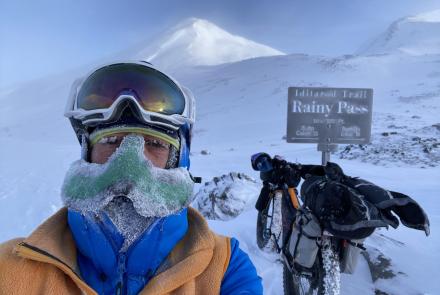The language link between central Siberia and Alaska
Spoken by only a few dozen people, a language uttered in river villages 3,000 miles from Alaska is related to Tlingit, Eyak and Athabaskan. This curious link has researchers wondering how people in the middle of Siberia can be related to Alaskans and other North Americans, and what it means to the populating of the Americas. When he visited Kellog Village in central Siberia a few years ago, Edward Vajda stirred the coals of what has become a bonfire in the world of anthropology and linguistics. Vajda, a linguist and professor at Western Washington University, is the person who perhaps knows the most about Ket, spoken by fewer than 50 people who live along the Yelogui and Yenisei rivers in central Siberia. Fascinated by how their language did not fit in with others of the region, Vajda was compelled to meet the people who spoke Ket. In 2008, he ventured to the village of Kellog, population 342. Like many Alaska villages, Kellog has no road connection to other villages and the outside world. To reach Kellog from his home in Washington, Vajda climbed aboard seven aircraft, three trains and a helicopter. On the large orange-and-blue helicopter, the regional equivalent of small planes that deliver mail and people to Alaska villages, Vajda flew for more than four hours before he set down on a lonely gravel airstrip. While in the village, Vajda sought out the elders who still spoke Ket. He sat down in their homes, drank coffee, and interviewed them in Russian and Ket. The more he heard of the Ket language, the more of an outlier it seemed. Ket speakers emphasized tones not important in other Siberia languages, and the verb structure was complex and unique, with grammatical meanings tacked on at the beginning rather than the ending. “There’s nothing like that anywhere in northern Asia,” Vajda said during a recent visit to Fairbanks. Though it seemed bizarre, Ket reminded Vajda of Athabaskan, a family of languages spoken by Natives in Alaska and western North America. He found several words that were similar, including canoe, wolverine, head, finger, conifer needle and mosquito. He tested the words for significance and found their relationship was stronger than coincidence. About 3,200 hundred miles and four intervening language families separate today’s speakers of Ket from those who still speak what researchers know as Na-Dene (Tlingit, Eyak and Athabaskan). The ancient language connection between central Siberia and North America raises the question of which group was speaking it first, and did they carry the language east or west over Bering Strait? “The benefits (of this linguistic connection) are profound,” said UAF anthropologist Ben Potter. “This can help us flesh out ancient cultures far beyond what’s possible with artifacts alone.” In a side note to the story, mosquitoes may have had a role in preserving the Ket language, Vajda said. About 3,000 years ago, Siberians began domesticating reindeer. The creatures that pulled sleds and also provided food and clothing were so useful that most people of the taiga became what Vajda calls “reindeer pastoralists.” The Ket people were the only remaining hunter-gatherers in Siberia, in part because the swampy land that surrounded their villages was teeming with mosquitoes. The Ket call July “sujdoqqip,” or “mosquito flying month,” a time they sometimes shoved off with houseboats into the Yenisei River — similar in size to the widest parts of the Yukon —to escape the mosquitoes. The bugs were numerous enough to harass reindeer to the point that keeping them was impractical. Instead, the Ket maintained their yearly cycles of hunting and fishing, keeping their culture intact along with their language. “(Mosquitoes) are one of the things that helped Ket survive,” Vajda said.
This column is provided as a public service by the Geophysical Institute, University of Alaska Fairbanks, in cooperation with the UAF research community. Ned Rozell is a science writer at the institute. This column first appeared in 1996.


